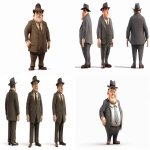Explore the Best AI Image Gallery
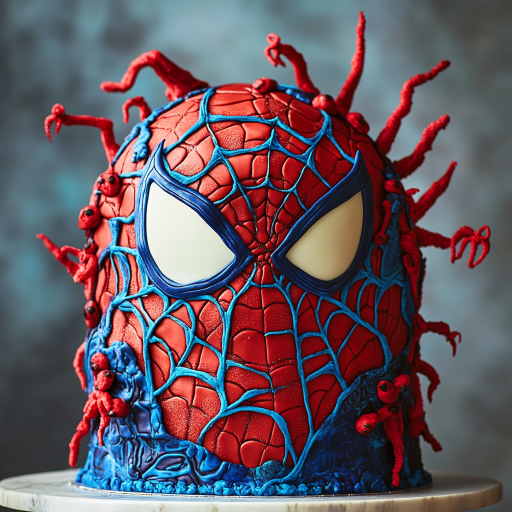
Shaping the Future of Creativity: The Role of AI-Generated Visual Content
The rise of artificial intelligence (AI) in recent years has given birth to a new genre of creative expression: AI-generated visual content. This technology, which enables machines to produce images and designs that mimic human creativity, is reshaping various sectors, from advertising and gaming to fine arts and entertainment. This blog post explores the profound impact of AI-generated visual content on the creative industry, its potential applications, the ethical considerations that arise, and what the future may hold for this exciting convergence of technology and creativity.
The Impact on the Creative Industry
AI-generated visual content is changing how artists and designers work. Historically, art was a labor-intensive process requiring extensive skill and time. However, through tools like DALL-E, Midjourney, and Artbreeder, creators can now effortlessly generate stunning visuals in seconds. This acceleration in visual production has the potential to enhance creativity by serving as a source of inspiration or offering new artistic tools that expand the possibilities of what can be created.
Some key impacts on the creative industry include:
- Democratization of Art: With AI tools becoming more accessible, individuals with minimal artistic skills can create compelling visuals, broadening participation in the arts.
- Augmented Creativity: AI can act as a collaborator, suggesting designs or color palettes, enabling artists to explore their ideas in innovative ways.
- Increased Productivity: Businesses can produce marketing materials or products faster by generating images automatically, thus reducing costs and time spent on design.
Potential Uses of AI-Generated Visual Content
The potential uses for AI-generated visual content are vast and varied. Here are some noteworthy applications:
- Advertising: Brands use AI to create tailored visuals that resonate with specific audiences, allowing for greater personalization in marketing campaigns.
- Entertainment: In the gaming industry, AI-generated environments and character designs can vastly reduce the time required for game development while still producing high-quality content.
- Fashion and Design: Fashion designers use AI tools to generate innovative clothing patterns, which can lead to new trends and styles that push boundaries.
- Film and Animation: Studios leverage AI to generate storyboards, visual effects, and entire scenes, paving the way for a new paradigm in film production.
Ethical Considerations
While the benefits of AI-generated visual content are apparent, ethical considerations must also be addressed. As AI technology evolves, so do the complexities surrounding its use:
- Attribution: When an AI-generated image is created, who is the rightful owner? The programmer, the user, or the AI itself? This remains a contentious issue within the art community.
- Copyright Infringement: AI tools are often trained on existing artworks, leading to concerns over whether these systems inadvertently replicate copyrighted material.
- Quality versus Quantity: With the ease of producing visuals, there is a risk that the market may become overwhelmed with subpar content, devaluing original, human-created artwork.
Future Trends
As we look to the future, several trends are emerging within the realm of AI-generated visual content:
- Improved Algorithms: Advances in machine learning and neural networks will enhance the quality and diversity of AI-generated content, making it more indistinguishable from human-created art.
- Integration with Augmented Reality (AR): AI-generated images may seamlessly blend with AR environments, allowing users to experience art in immersive and interactive ways.
- Enhanced Collaboration: Future artists may increasingly engage AI not just as a tool but as a co-creator, forging new partnerships between human and machine creativity.
- Ethical Frameworks: As the industry matures, we will likely see the establishment of frameworks aimed at addressing the ethical concerns surrounding copyright and attribution in AI art.
In conclusion, AI-generated visual content represents a significant shift in the creative industry, offering new possibilities for artistic expression while also presenting challenges that need thoughtful consideration. As technology continues to evolve, it will be fascinating to witness how these developments shape the roles of artists and designers, and how we value creativity in an increasingly automated world.
](https://images.ai-img.art/thumbnails/150/d08f607caf4a5c380defef68b778febb8911e8e51e51927b09ed67880bd3084b.webp)

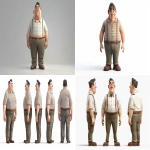
![**ultra detailed 8k cinematic black and white beauty portrait of a young woman from chest up, vertical frame, face, hands and hair filling the composition, smooth neutral grey studio background with soft dark vignette on the edges, center of the frame is her eye, lips and finger in a "shh" gesture oval symmetrical face with soft but well defined features, ultra smooth flawless skin, no pores, no wrinkles, perfect beauty retouch, straight elegant nose with soft highlight along the bridge and gentle shadow under the tip full sensuous lips with a sharp cupid’s bow, slightly parted, a thin bright glossy highlight strip on the lower lip emphasizing volume, subtle light reflection on the lip gloss one eye visible through a gap between fingers, other eye mostly hidden by the upper hand, long thick eyelashes like fake lashes, small bright catchlight in the pupil, upper eyelid with smoky eye makeup, darker tone along lash line fading smoothly towards the brow, dark thick well shaped eyebrows, gently arched, not overdramatic dark wavy hair, big glossy waves falling down, one clear S-shaped wave on the right side of the frame, soft highlights along the strands to show texture, hair swept away from the cheeks so the face is not covered both hands in thin semi-transparent black gloves up to the forearm, upper hand placed horizontally across the upper face, back of the hand towards camera, fingers slightly spread so that one finger is above the brows and another lower finger creates a narrow gap that reveals the eye, fingertips long and tapered, sharp stiletto-like nails visible under the sheer fabric, subtle darker seams along the fingers and glove edges lower hand bent so that the index finger is vertical and gently touching the center of the lips in a classic "shhh" pose, [...]** - Image #3 <@1264899319799222315>](https://images.ai-img.art/thumbnails/150/4c03a422708b372b43caaee1e2929933c40f0a13dc069beeeb228a60b126223b.webp)
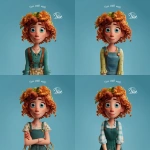
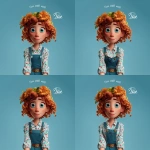

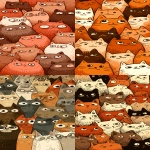
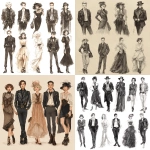
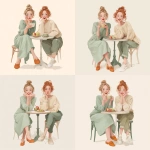
](https://images.ai-img.art/thumbnails/150/4f3d83c4b1d979b5be00f4ea80d67b71c0335bc1163e692d738e553ac37709e5.webp)
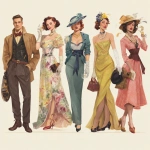
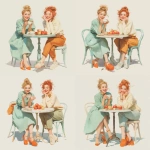
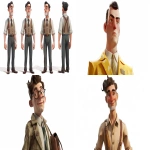
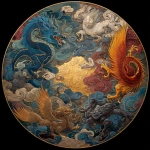
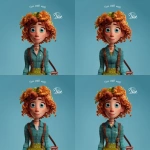
![**ultra detailed 8k cinematic black and white beauty portrait of a young woman from chest up, vertical frame, face, hands and hair filling the composition, smooth neutral grey studio background with soft dark vignette on the edges, center of the frame is her eye, lips and finger in a "shh" gesture oval symmetrical face with soft but well defined features, ultra smooth flawless skin, no pores, no wrinkles, perfect beauty retouch, straight elegant nose with soft highlight along the bridge and gentle shadow under the tip full sensuous lips with a sharp cupid’s bow, slightly parted, a thin bright glossy highlight strip on the lower lip emphasizing volume, subtle light reflection on the lip gloss one eye visible through a gap between fingers, other eye mostly hidden by the upper hand, long thick eyelashes like fake lashes, small bright catchlight in the pupil, upper eyelid with smoky eye makeup, darker tone along lash line fading smoothly towards the brow, dark thick well shaped eyebrows, gently arched, not overdramatic dark wavy hair, big glossy waves falling down, one clear S-shaped wave on the right side of the frame, soft highlights along the strands to show texture, hair swept away from the cheeks so the face is not covered both hands in thin semi-transparent black gloves up to the forearm, upper hand placed horizontally across the upper face, back of the hand towards camera, fingers slightly spread so that one finger is above the brows and another lower finger creates a narrow gap that reveals the eye, fingertips long and tapered, sharp stiletto-like nails visible under the sheer fabric, subtle darker seams along the fingers and glove edges lower hand bent so that the index finger is vertical and gently touching the center of the lips in a classic "shhh" pose, [...]** - Image #2 <@1264899319799222315>](https://images.ai-img.art/thumbnails/150/d87499f6bdc5a4a822aea4674654f70073b052542a1aaa1d08461a13ca2e07f9.webp)
](https://images.ai-img.art/thumbnails/150/7c4350a99935771fe343a7ae65c780cf4cd6b861e69cdc32bd58a3a92fb2476f.webp)

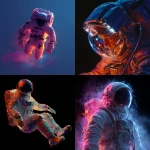
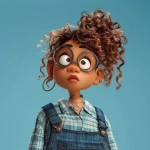
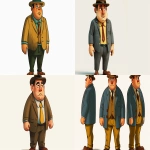

](https://images.ai-img.art/thumbnails/150/5487dcbcab0cd5702a67cc6819342ef56c05d0fc7730bfb7718ee291f10c3da3.webp)
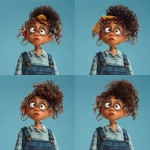
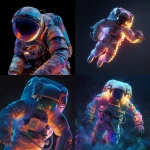

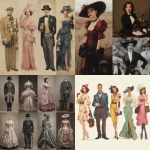

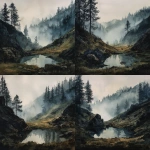
](https://images.ai-img.art/thumbnails/150/e07ad2e7379a835127482b0fd3176192c001c90e68a85b4315cf482b6a3f5ea5.webp)
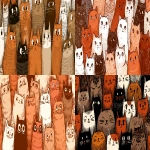
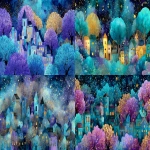
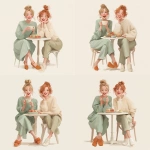
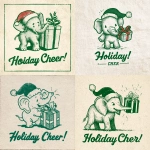

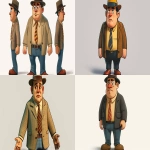
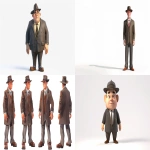
![**ultra detailed 8k cinematic black and white beauty portrait of a young woman from chest up, vertical frame, face, hands and hair filling the composition, smooth neutral grey studio background with soft dark vignette on the edges, center of the frame is her eye, lips and finger in a "shh" gesture oval symmetrical face with soft but well defined features, ultra smooth flawless skin, no pores, no wrinkles, perfect beauty retouch, straight elegant nose with soft highlight along the bridge and gentle shadow under the tip full sensuous lips with a sharp cupid’s bow, slightly parted, a thin bright glossy highlight strip on the lower lip emphasizing volume, subtle light reflection on the lip gloss one eye visible through a gap between fingers, other eye mostly hidden by the upper hand, long thick eyelashes like fake lashes, small bright catchlight in the pupil, upper eyelid with smoky eye makeup, darker tone along lash line fading smoothly towards the brow, dark thick well shaped eyebrows, gently arched, not overdramatic dark wavy hair, big glossy waves falling down, one clear S-shaped wave on the right side of the frame, soft highlights along the strands to show texture, hair swept away from the cheeks so the face is not covered both hands in thin semi-transparent black gloves up to the forearm, upper hand placed horizontally across the upper face, back of the hand towards camera, fingers slightly spread so that one finger is above the brows and another lower finger creates a narrow gap that reveals the eye, fingertips long and tapered, sharp stiletto-like nails visible under the sheer fabric, subtle darker seams along the fingers and glove edges lower hand bent so that the index finger is vertical and gently touching the center of the lips in a classic "shhh" pose, [...]** - Image #4 <@1264899319799222315>](https://images.ai-img.art/thumbnails/150/8507c113aa12343ebd50af4ab9c637a6cf1acf21c55772271eb6a66bb04fa39c.webp)
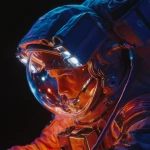
](https://images.ai-img.art/thumbnails/150/f3411154f4c743a26f102ecfc985f3f6214e93b285748fac66c88f3b52f85b26.webp)
](https://images.ai-img.art/thumbnails/150/1871c145bfe0276c6e1bacf6ec0da6d2dae71370bf71674589af29a201acdd5f.webp)
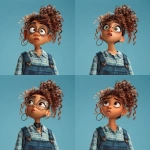

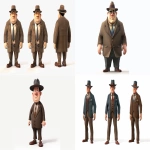

![**ultra detailed 8k cinematic black and white beauty portrait of a young woman from chest up, vertical frame, face, hands and hair filling the composition, smooth neutral grey studio background with soft dark vignette on the edges, center of the frame is her eye, lips and finger in a "shh" gesture oval symmetrical face with soft but well defined features, ultra smooth flawless skin, no pores, no wrinkles, perfect beauty retouch, straight elegant nose with soft highlight along the bridge and gentle shadow under the tip full sensuous lips with a sharp cupid’s bow, slightly parted, a thin bright glossy highlight strip on the lower lip emphasizing volume, subtle light reflection on the lip gloss one eye visible through a gap between fingers, other eye mostly hidden by the upper hand, long thick eyelashes like fake lashes, small bright catchlight in the pupil, upper eyelid with smoky eye makeup, darker tone along lash line fading smoothly towards the brow, dark thick well shaped eyebrows, gently arched, not overdramatic dark wavy hair, big glossy waves falling down, one clear S-shaped wave on the right side of the frame, soft highlights along the strands to show texture, hair swept away from the cheeks so the face is not covered both hands in thin semi-transparent black gloves up to the forearm, upper hand placed horizontally across the upper face, back of the hand towards camera, fingers slightly spread so that one finger is above the brows and another lower finger creates a narrow gap that reveals the eye, fingertips long and tapered, sharp stiletto-like nails visible under the sheer fabric, subtle darker seams along the fingers and glove edges lower hand bent so that the index finger is vertical and gently touching the center of the lips in a classic "shhh" pose, [...]** - Image #1 <@1264899319799222315>](https://images.ai-img.art/thumbnails/150/ff5a24c7c060f5350508823c406c28c9596aea4e37eefb60abc0f37504a37383.webp)

